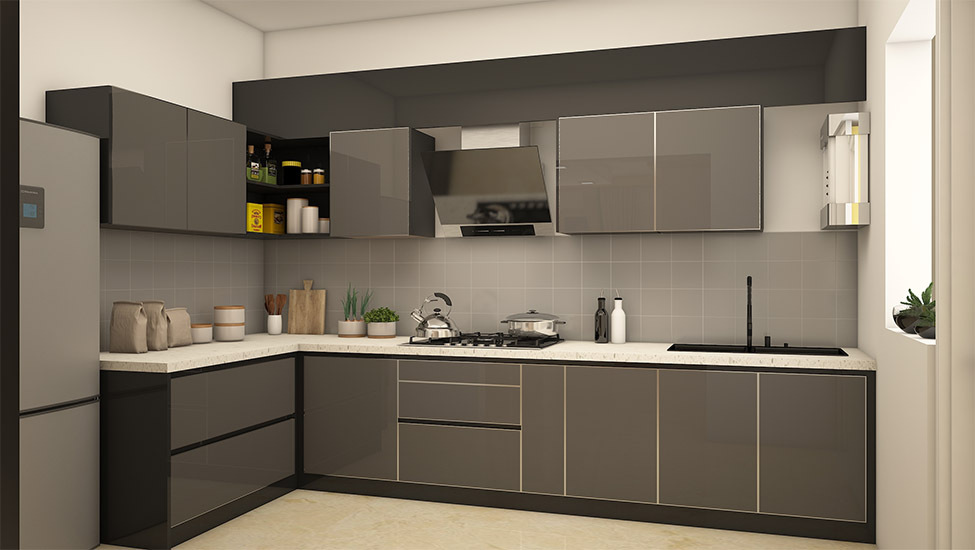- Layout: The layout of your modular kitchen should be based on the available space, your needs, and the functionality you require. A common layout for modular kitchens is the L-shaped design, which provides ample storage and counter space. Other popular layouts include U-shaped and parallel kitchens.
- Cabinets and storage: Modular kitchens rely heavily on cabinets and storage solutions to optimize space. Cabinets should be designed to accommodate all your kitchen items, including appliances, utensils, and dishes. Use of vertical storage solutions such as tall cabinets, pull-out drawers and corner cabinets can help you utilize every inch of your kitchen.
- Countertops: Countertops are an essential element of any modular kitchen interior. They should be durable, easy to clean, and provide ample workspace. Materials such as granite, marble, quartz, and laminates are popular options for countertops.
- Lighting: Proper lighting is critical in any kitchen design. Use a combination of task and ambient lighting to create a functional and aesthetically pleasing space. For instance, under-cabinet lighting, overhead lights, and pendant lights can help illuminate different areas of the kitchen.
- Flooring: The flooring should be durable, easy to clean and complement the overall design of your modular kitchen. Tiles, hardwood, and vinyl are some popular options.
- Appliances: Appliances such as refrigerators, ovens, and dishwashers play a significant role in the functionality of your modular kitchen. Choose appliances that are energy-efficient, durable, and suit your needs.
Overall, designing a modular kitchen interior requires a good understanding of space, functionality, and style. Work with an experienced interior designer to help create a customized kitchen that meets your needs and preferences.









